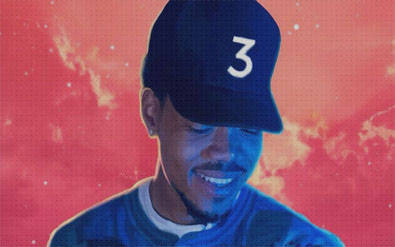By: Chris Blake
“I know people think that independence means you do it by yourself. But independence means freedom.”
So said Chance the Rapper during his acceptance speech at the 59th Grammys where he won the awards for Best New Artist, Best Rap Album, and Best Rap Performance.
All this without really releasing an album.
Not only is Chance not signed with a major label, after a two-week exclusivity window with Apple Music (which did put a tidy $500K in the rapper’s pocket), he made his last “mix-tape” freely available on SoundCloud. It was the first ‘album’ to chart on the sole strength of streaming through such services as Spotify, Apple Music and Deezer.
While many have applauded Chance for the success he achieved going around the majors, his success was also very good news for the majors, because Chance showed just how useful music streaming can be—not just as a revenue generator, but as a promotional vehicle.
Of course, the majors already knew there was money to be made in music streaming. Royalties from streaming accounted for 51% of music revenue in the U.S. last year (according to the RIAA), driving an 11% hike in overall sales—the biggest gain since 1998. Just three years after being reviled for exploiting artists (remember the $3K Pharrell made from 43 millions streams of “Happy”?), it seems music streaming is finally beginning to hit its stride for both the majors and independents.
Still, the question remains. Can streaming save the industry from the continued drop in CD and download sales? Many say this will first depend on whether service providers like Spotify can even survive. For these guys, paid subscriptions are key. Already, music streaming services have surpassed the 100 million mark according to MIDiA Research, and Goldman Sachs says streaming revenues should double in the next three years on the strength of better licensing deals and paid subscription growth, driven in turn by some cool new features like higher 26-bit sound quality. But despite all the money coming in (Spotify raked in $2 billion in 2015 alone), music streaming is still many hundreds of millions more in the red.
As the streaming platforms work to figure it out, so must everyone in the music ecosystem—most of all the artists who for every streamed piece of music earn a fraction of a fraction of a cent. With the Internet came new and easier ways for independent artists to create and be heard. (Lest we forget, Justin Bieber was discovered on YouTube. Adele found super-stardom through MySpace.)
But, through the new golden gates of opportunity came a flood of competition. Who knew there were so many talented singers, musicians and songwriters out there? And with artificial intelligence now threatening to put the squeeze on at least some human songwriting (starting with video game and in-store music), this crowded market is about to get even stuffier. Anyone who wishes to succeed in this business will need to stay ahead of the curve.
This is why Chance’s success is such a big deal. He showed what staying ahead of the curve means. It isn’t just his creativity as a songwriter. It’s his creativity as a promoter. He rightly saw streaming not as a revenue tool, but as a way to be heard—free love for the fans who were happy to pour even more money than they saved into his touring, merchandising, VIP experience packages, and other coffers.
But the lesson for artists and the music industry at large (and hell, just about anyone whether you’re in finance or marketing) isn’t to do as Chance does. The lesson is to be what Chance is: a creative innovator. This means forging your own path. Like Radiohead did when they debuted pay-what-you-like downloads. Like Wu-Tang Clan did when they made only one physical copy of their album Once Upon a Time in Shaolin and sold it for $2 million to the highest bidder.
Not everyone can create the kind of mystique Chance did to turn heads, but there are plenty of new tools Spotify, Pandora and others are offering up to make it easier for artists to promote their music and deepen fan relationships. Bands can focus their touring and local radio promotion efforts on where their music is getting the most pick-up. They can conduct A/B testing to see which songs play best where. They can evolve their own songwriting based on what was learned through their failures and successes. The hopelessly eclectic can even hone their craft to focus on genres where they’ll have the greatest chance of finding success. (Beware: according to Spotify Insights, metal fans are the most loyal.) Meanwhile, the major labels get to add another powerful tool to their marketing arsenal—one that will only get better at generating the kind of visibility, engagement and profits that brings super-stardom to signed talent.
The point is, there will continue to be plenty of opportunity to innovate for everyone. And we can thank Chance the Rapper and music streaming for proving to the music industry once again: creative innovation always prevails.



